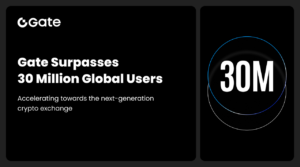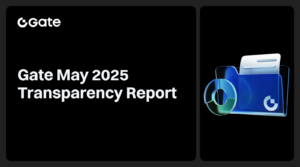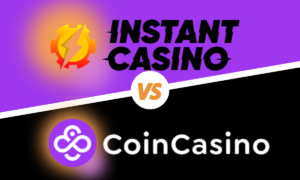
Blockchain technology has the potential to revolutionize the way international trade and commerce are conducted. By providing a secure and transparent system for tracking transactions and managing data, blockchain can help to reduce costs, increase efficiency, and enhance trust in international trade. In this article, we will explore the impact of blockchain on international trade and commerce, including its benefits, challenges, and real-world examples.
Benefits of blockchain in international trade and commerce
Increased transparency
One of the key benefits of blockchain technology in international trade is its ability to increase transparency. Blockchain enables the creation of a tamper-proof, distributed ledger that records all transactions in real-time. This means that all parties involved in a trade can view and verify the same information, making it easier to track the flow of goods and money, and to identify potential issues before they become problems.
Enhanced security
Another key benefit of blockchain technology is its enhanced security. By using cryptography to secure transactions and data, blockchain ensures that all information is kept private and secure. This is particularly important in international trade, where there are often multiple parties involved in a transaction, each with their own set of security protocols.
Reduced costs
Blockchain can also help to reduce costs in international trade by streamlining processes and eliminating the need for intermediaries. By creating a secure and transparent system for tracking transactions and managing data, blockchain can help to reduce the time and costs associated with manual processes, such as paperwork, and can also eliminate the need for third-party intermediaries, such as banks or brokers.
Increased efficiency
Blockchain can also help to increase efficiency in international trade by providing a more streamlined and automated system for managing transactions and data. By eliminating manual processes and intermediaries, blockchain can help to speed up the flow of goods and money, reducing the time and costs associated with international trade.
Challenges of blockchain in international trade and commerce
Regulatory challenges
One of the main challenges of blockchain in international trade is regulatory compliance. International trade is subject to a wide range of regulations, and it can be difficult to ensure that blockchain solutions comply with all relevant regulations. Additionally, the lack of regulatory clarity in some countries can make it difficult to develop and implement blockchain solutions that are compliant with local laws and regulations.
Technical challenges
Another challenge of blockchain in international trade is technical complexity. Blockchain is a complex technology that requires specialized knowledge and expertise to implement and manage. Additionally, blockchain solutions may require integration with existing systems and infrastructure, which can be difficult and time-consuming.
Adoption challenges
Finally, one of the biggest challenges of blockchain in international trade is adoption. Blockchain is still a relatively new technology, and many companies and organizations may be hesitant to adopt it due to concerns about security, cost, and complexity. Additionally, the lack of interoperability between different blockchain solutions can make it difficult to achieve widespread adoption.
Real-world examples of blockchain in international trade and commerce
Maersk and IBM
Maersk, the world’s largest container shipping company, has partnered with IBM to create a blockchain-based system for tracking shipping containers. The system, called TradeLens, uses blockchain technology to provide real-time tracking of containers, streamlining the flow of goods and reducing the time and costs associated with international trade.
China’s One Belt, One Road initiative
China’s One Belt, One Road initiative is a massive infrastructure project that aims to connect Asia, Europe, and Africa through a network of roads, railways, ports, and other infrastructure. Blockchain technology is being used to help manage the complex logistics of the project, enabling real-time tracking of goods and money, and increasing efficiency and transparency in international trade.
Ripple and cross-border payments
Ripple is a blockchain-based payment protocol that is designed to enable fast, secure, and low-cost cross-border payments. Ripple’s technology uses blockchain to provide real-time settlement of transactions, reducing the time and costs associated with cross-border payments. Ripple has partnerships with over 300 financial institutions around the world, and its technology is being used to facilitate cross-border payments between countries and financial institutions.
Dubai Customs and Maqta Gateway
Dubai Customs has partnered with Maqta Gateway, a subsidiary of Abu Dhabi Ports, to create a blockchain-based system for managing trade in the United Arab Emirates (UAE). The system, called the Dubai Trade Blockchain, uses blockchain technology to provide a secure and transparent system for managing trade transactions and data. The system is designed to reduce the time and costs associated with trade in the UAE, and to enhance trust and transparency in international trade.
Komgo
Komgo is a blockchain-based platform that is designed to streamline and automate the commodity trading process. The platform uses blockchain technology to provide a secure and transparent system for managing commodity transactions and data, reducing the time and costs associated with commodity trading. Komgo has partnerships with some of the world’s largest commodity traders and financial institutions, and its technology is being used to facilitate commodity trades around the world.
Conclusion
Blockchain technology has the potential to transform international trade and commerce by providing a secure and transparent system for managing transactions and data. By increasing transparency, enhancing security, reducing costs, and increasing efficiency, blockchain can help to streamline and automate international trade, reducing the time and costs associated with manual processes and intermediaries. However, there are also significant challenges to be overcome, including regulatory compliance, technical complexity, and adoption. Despite these challenges, the real-world examples of blockchain in international trade and commerce are encouraging, and suggest that blockchain has the potential to revolutionize the way we conduct international trade and commerce in the future.
I’m a highly experienced and respected author in the field of Cryptocurrencies. I have written numerous articles and books on the subject, and my work is highly regarded by my peers. I have a strong understanding of the technology behind cryptocurrencies, and I am always up-to-date with the latest developments in the space. I am also an active investor in cryptocurrencies, and I have made a significant profit from investing in this new asset class. In addition to my writing and investment activities, I am also an active member of the cryptocurrency community, and I frequently speak at industry events.








